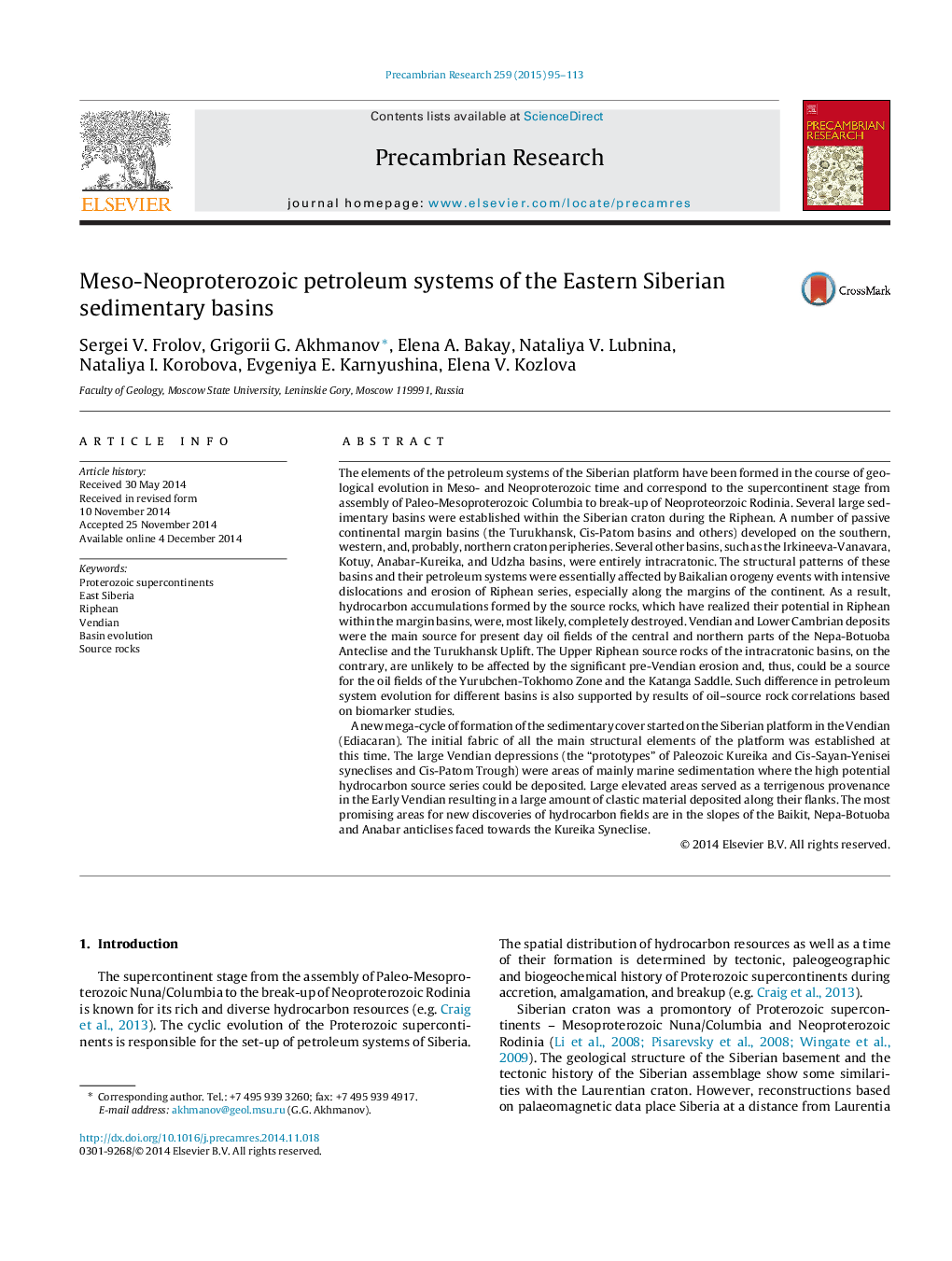| کد مقاله | کد نشریه | سال انتشار | مقاله انگلیسی | نسخه تمام متن |
|---|---|---|---|---|
| 4722831 | 1639616 | 2015 | 19 صفحه PDF | دانلود رایگان |

• Evolution of the supercontinents is responsible for the set-up of petroleum systems.
• Meso-Neoproterozoic petroleum systems are formed within basins of various types.
• Pre-Vendian (850–650 Ma) erosion destroyed some elements of the petroleum systems.
• For some places the Pre-Vendian erosion magnitude is estimated as 3–4 km.
• Vendian series are determined as source rocks for many oil accumulations.
The elements of the petroleum systems of the Siberian platform have been formed in the course of geological evolution in Meso- and Neoproterozoic time and correspond to the supercontinent stage from assembly of Paleo-Mesoproterozoic Columbia to break-up of Neoproteorzoic Rodinia. Several large sedimentary basins were established within the Siberian craton during the Riphean. A number of passive continental margin basins (the Turukhansk, Cis-Patom basins and others) developed on the southern, western, and, probably, northern craton peripheries. Several other basins, such as the Irkineeva-Vanavara, Kotuy, Anabar-Kureika, and Udzha basins, were entirely intracratonic. The structural patterns of these basins and their petroleum systems were essentially affected by Baikalian orogeny events with intensive dislocations and erosion of Riphean series, especially along the margins of the continent. As a result, hydrocarbon accumulations formed by the source rocks, which have realized their potential in Riphean within the margin basins, were, most likely, completely destroyed. Vendian and Lower Cambrian deposits were the main source for present day oil fields of the central and northern parts of the Nepa-Botuoba Anteclise and the Turukhansk Uplift. The Upper Riphean source rocks of the intracratonic basins, on the contrary, are unlikely to be affected by the significant pre-Vendian erosion and, thus, could be a source for the oil fields of the Yurubchen-Tokhomo Zone and the Katanga Saddle. Such difference in petroleum system evolution for different basins is also supported by results of oil–source rock correlations based on biomarker studies.A new mega-cycle of formation of the sedimentary cover started on the Siberian platform in the Vendian (Ediacaran). The initial fabric of all the main structural elements of the platform was established at this time. The large Vendian depressions (the “prototypes” of Paleozoic Kureika and Cis-Sayan-Yenisei syneclises and Cis-Patom Trough) were areas of mainly marine sedimentation where the high potential hydrocarbon source series could be deposited. Large elevated areas served as a terrigenous provenance in the Early Vendian resulting in a large amount of clastic material deposited along their flanks. The most promising areas for new discoveries of hydrocarbon fields are in the slopes of the Baikit, Nepa-Botuoba and Anabar anticlises faced towards the Kureika Syneclise.
Journal: Precambrian Research - Volume 259, April 2015, Pages 95–113